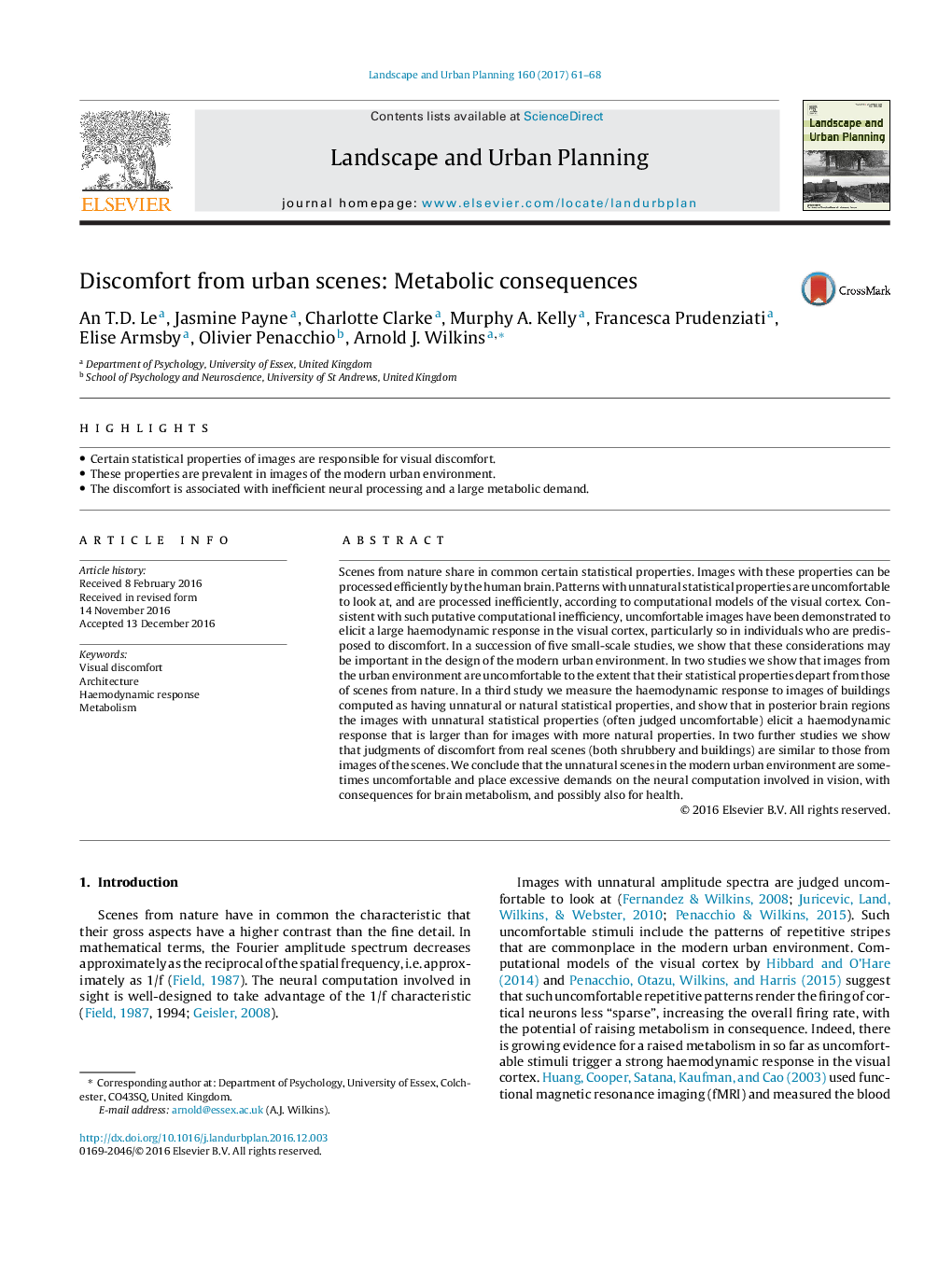ترجمه فارسی عنوان مقاله
ناراحتی از صحنه های شهری: پیامدهای متابولیک
عنوان انگلیسی
Discomfort from urban scenes: Metabolic consequences
| کد مقاله | سال انتشار | تعداد صفحات مقاله انگلیسی |
|---|---|---|
| 125738 | 2017 | 8 صفحه PDF |
منبع

Publisher : Elsevier - Science Direct (الزویر - ساینس دایرکت)
Journal : Landscape and Urban Planning, Volume 160, April 2017, Pages 61-68
ترجمه کلمات کلیدی
ناراحتی بصری، معماری، واکنش همودینامیک، متابولیسم،
کلمات کلیدی انگلیسی
Visual discomfort; Architecture; Haemodynamic response; Metabolism;
ترجمه چکیده
صحنه هایی از سهم طبیعت در خواص آماری خاص آماری. تصاویری با این خواص می توانند به صورت موثر توسط مغز انسان مورد پردازش قرار گیرند. الگوهائی با خواص آماری غیر طبیعی به نظر می رسد که به نظر می رسد و با توجه به مدل های محاسباتی قشر بصری، ناکارآمد می شوند. مطابق با چنین ناکارآمدی محاسباتی پیش بینی شده، تصاویر ناراحت کننده نشان داده شده است که پاسخ های بزرگ هیدروژنی را در قشر بینایی به وجود می آورند، به ویژه در افراد مبتلا به ناراحتی. در یک سری از پنج تحقیق در مقیاس کوچک، ما نشان می دهیم که این ملاحظات ممکن است در طراحی محیط مدرن شهری مهم باشد. در دو مطالعه ما نشان می دهیم که تصاویر از محیط شهری ناراحت کننده هستند به طوری که خواص آماری آنها از صحنه هایی از طبیعت جدا می شوند. در یک مطالعه سوم، پاسخ های هیدروژنی به تصاویر ساختمان هایی که به عنوان خواص آماری غیر طبیعی یا طبیعی محاسبه شده اند را اندازه گیری می کنیم و نشان می دهیم که در مناطق مغز خلفی تصاویری با خصوصیات غیر طبیعی طبی (که غالبا به نظر می رسد ناراحت کننده است) پاسخ های همودینامیکی را بزرگتر از تصاویر با خواص طبیعی بیشتر. در دو مطالعه بیشتر نشان می دهد که قضاوت های ناراحت کننده از صحنه های واقعی (هر دو درختچه و ساختمان ها) شبیه به تصاویری از صحنه ها هستند. ما نتیجه می گیریم که صحنه های غیر طبیعی در محیط شهری مدرن گاهی ناراحت کننده است و مطالبات بیش از حد در محاسبات عصبی درگیر در دیدگاه وجود دارد که پیامدهای آن برای متابولیسم مغز و احتمالا برای سلامتی است.

